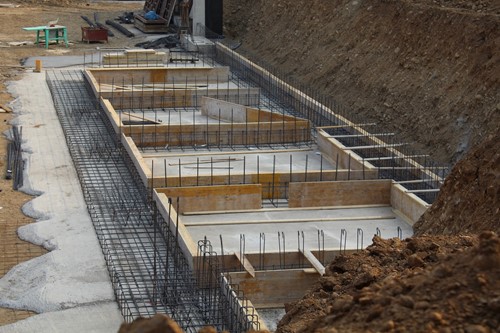Email: [email protected]

For centuries, builders have used concrete in foundation building for structures of all shapes and sizes. Concrete foundations are still the most common type of foundation for homes, commercial buildings and everything in between. There are several types of concrete foundation you should know if you’re planning to build a home. Here is a basic guide to the different types of concrete foundation and their benefits:
T-shaped foundations are commonly used in areas with freezing temperatures. Builders find the frost line in the ground and construct the footing at that level. After constructing the foundation walls, the concrete slab is laid on top.
Slab-on-grade foundations are made of a single layer of concrete. The layer is poured thicker at the edges and gets thinner toward the top of the grade. Wire mesh is used in constructing these foundations to reduce risk of concrete cracking.
Frost protected foundations are used for heated structures. They use two layers of insulation around the outside of the foundation wall to contain heat and let it rise into the building regardless of frost.
Poured concrete foundations are the most common type of foundation used for homes and residential buildings, while much larger structures require additional support. They are affordable and offered by countless contractors and construction companies across the globe. Here are some additional key benefits of concrete foundations:

Lynn Butterfield is an Associate Broker at Coldwell Banker and is a Certified Real Estate Negotiator. Mr. Butterfield has 41 years of experience in real estate sales and development. His vast experience ranges from luxury sales through commercial sales and leasing. Perhaps more importantly, he focuses his attention on client success, whether he's helping someone buy their first home, or working with a developer seeking assistance to create and position a large project in the marketplace. One recent client said, "Working with Lynn is almost like working with a Real Estate Attorney, because he knows exactly what to look for, so you can be protected!" Another first-time home buyer just said, "I needed someone to hold my hand through this because it's the largest investment we'll ever make! I know he isn't in this just to make a quick buck. He really cares about his clients!"
Whether you're in the research phase at the beginning of your real estate search or you know exactly what you're looking for, you'll benefit from having a real estate professional by your side. He would be honored to put his real estate experience to work for you.